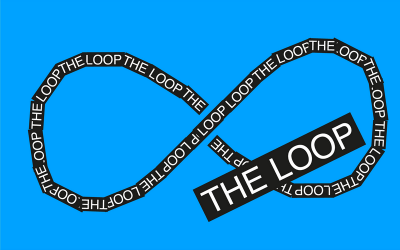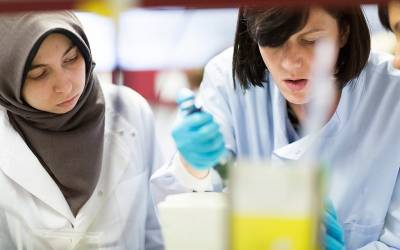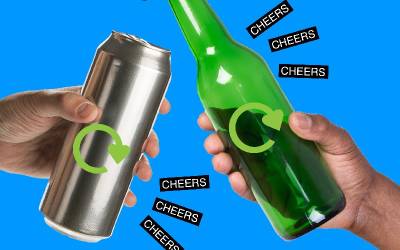Reducing plastic tubes in labs
Learn about how research assistant Sacha McElligott figured out a novel way to reduce single-use plastics in his research.
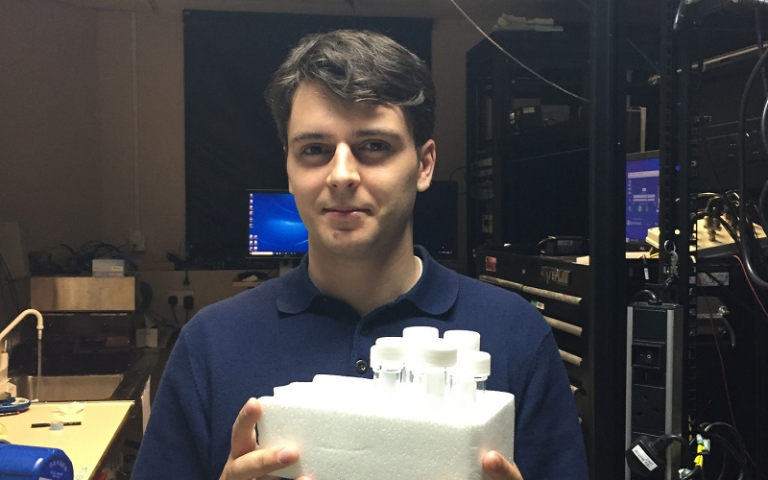
27 January 2020
As part of UCL’s ‘The Loop’ campaign, Sustainable UCL are keen to tackle unsustainable consumption throughout the university by reducing waste and buying best products for people and the planet. Laboratories are a main focus of the campaign, with high-levels of packaging and single-use plastics required for research. UCL’s Green Champions using LEAF have been working hard to reduce waste and increase re-use.
Sacha McElligott, a research assistant in UCL’s Häusser Lab, is playing his part by reusing test tubes for non-toxic solutions. His research previously required the use of a lot of plastic test tubes to store sugar water, used to incentivise mice to perform in behavioral tasks. Rather than purchasing and using the standard new large 50 ml test tubes daily, Sacha began re-using 30 ml versions, which is the smallest size necessary for the solutions. He simply did a wash of the smaller tubes to ensure they were clean for subsequent tests.
Given that he needed to conduct these tests dozens of times, purchasing new large test tubes would have been financially and environmentally costly. Furthermore, by reusing the tubes Sacha reduced the volume of clinical waste produced, which is then incinerated at high temperatures. This represents another financial saving and mitigation of the environmental impact of his research! In future tests, Sacha is considering the necessity of putting the tubes through clinical waste at all, considering they came into contact just with a sugar solution and people.
Through the simple wash, Sacha was able to reduce the use of test tubes by an impressive 85% (according to his calculations), from 200 to just 25 tubes for the aforementioned timeline. The graph above shows a simulation of the amount of tubes saved during his experiment through re-use, which ran between February and August 2019. The red indicates the amount of tubes used over time if they are replaced each day (indicated as “theoretical”). The blue indicates the reusable method (indicated as “actual”), with an assumed probability of some small experimental errors.
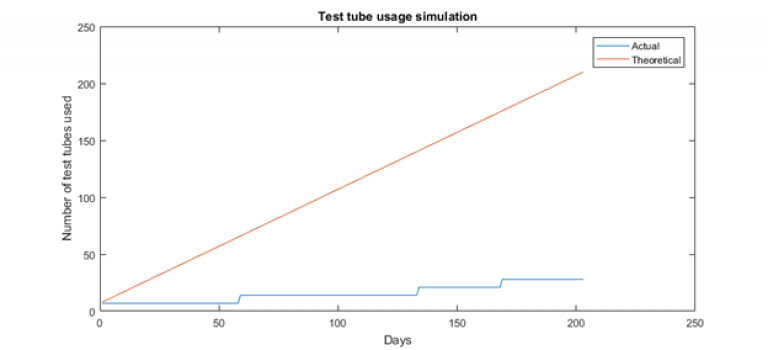
The red line indicates the potential use of tubes if Sacha hadn’t started reusing them, whilst the blue line indicates a simulation of his usage of them, thanks to his efforts.
Since finishing his research, he has shared his findings in hope that the department will embed this practice and continue to improve their environmental impact. We applaud Sacha in developing and implementing this method on his own, and hope that it may inspire others to consider plastic use in their experiments as well.
 Close
Close


